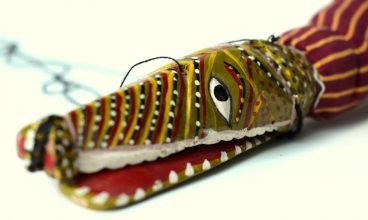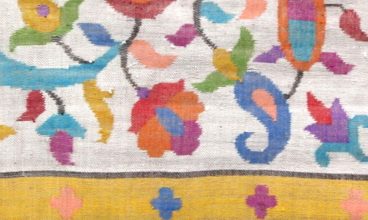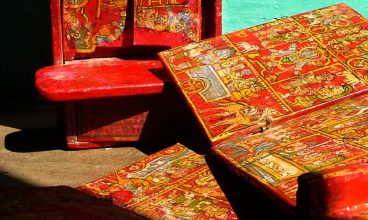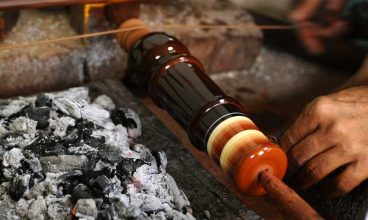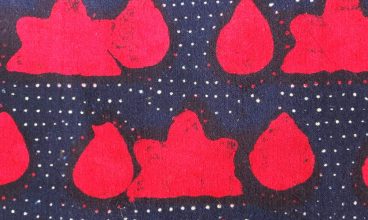It is said that puppetry of Rajasthan is more than a thousand years old but there is no written evidence of it. Mainly the ‘Bhat’ community practices this art termed ‘Kathputli’ (‘Kath’ meaning wood and ‘Putli’ meaning doll). These people claim that their ancestors had performed for royal families and received great honour and prestige […]
Read MoreThe shawls in Kashmir are woven from fine wool or other animal fleece. It is colloquially known as ‘Jamawar’, when it was woven in yards. This was because the Maharajas and nobility by the yard or ‘Jam’ purchased it. It was then stitched into robes or gowns called ‘Jama’. Kani shawls, on the other hand, […]
Read MoreBlock printing is an ancient printing technique used on cloth and textiles to make beautiful patterns. The origins of hand block printing are believed to lie in China, where the technique was first used around the 3rd century when books would be written by hand and there couldn’t be many copies since writing a book […]
Read MoreMuch before cinema and animations, storytelling was in such forms that would bring the storyteller and listener together in their mesmerizing worlds of mythical heroes and gods. The Kaavad was one such method of storytelling. The Kaavad is a portable wooden shrine with many hinged wooden panels, which can be opened up to reveal visuals […]
Read MoreSoft wood spins on the lathe from morning to twilight, metamorphosing into beautiful objects and shapes. The art of making Lacquer ware is a thriving traditional craft, once reserved to royal patronage, it quickly found its place in crafting various items of both decorative and functional uses.
Read MoreBeadwork is a craft that is practiced by many tribes across the world and is an expression of their colorful culture. Jhabua, Madhya Pradesh is famous for its bead work and the craft is actively practiced here. Women in families thread together tiny, colorful beads to create intricate pieces of jewelry with designs inspired from […]
Read MoreClay tiles with sculptures of gods and goddesses and local deities in hollow relief form, made flat on one end to be hung on the wall, Molela terracotta works are a regional art of Molela, Rajasthan. Made as a flat surface, unlike the usual idols made elsewhere, these plaques are brightly painted and unique in […]
Read MorePattachitra is a vibrant art form of Orissa laden with ‘Puranic’ culture, stories and breathtaking details. The word ‘Pattachitra’ is derived from two Sanskrit words ‘Patta’ and ‘Chitra’ which put together means ‘paintings on cloth’. They have evolved around the cult of Lord Jagannath of Puri.
Read MoreLaced with wild flowers, shimmering lakes-it is truly what the mogul emperors described it as-“a paradise on earth-. Taking inspiration from their surrounding this unique craft involves the use of paper pulp for creating beautiful artifacts painted by expert craftsmen in lifelike images of kingfishers, maple leaves and other motifs.
Read MoreDabu, derived from ‘Dabanna’, means ‘to press’ and is a mud-resist block-printing craft practiced in the alluring village of Akola in Rajasthan. Local women from the Jat, Gujjar and Gadariya tribes adorn the fabric thus printed. What sets this craft apart is the usage of the traditional exclusive Akola motifs in an array of bright […]
Read More

